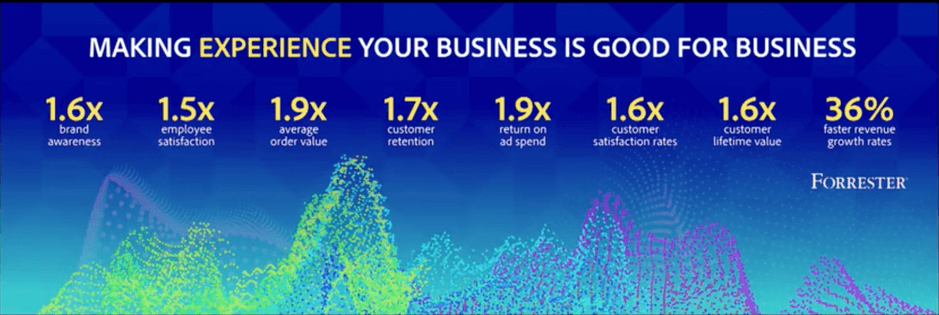There. I said it. Especially, MarTech conferences are awesome! The hype, the innovative technologies, the passionate marketers, discovering the endless possibilities – the brilliant things they can do with their newly-found technical capabilities… It’s great, and I love those conferences…
Adobe Symposium was held in Sydney last week, and being the celeb that I am, I scored an invitation to attend. I was also lucky to attend the Adobe Summit in Las Vegas a few months ago, which was on a “slightly bigger“ scale. As a marketer, I love hearing about various marketing approaches, campaigns, technologies and meeting the people behind the stories. These Adobe conferences provide great opportunities to hear those stories and meet these people.
Adobe is the Mother of marketing technology companies, responsible of some of the cornerstone tools we take for granted today – from PDF (Portable Document Format) documents, to Photoshop and Illustrator. Our marketing creatives would not have been able to bring their creativity to life without this innovative technology company.
The role of the marketing department has changed significantly over the decades, especially in the last 2 decades. Marketers are now required to be more tech-savvy, understand data better, use personalisation on a daily basis, and integrate datasets and insights into their daily operations. Clever lines and brilliant imagery don’t cut it anymore…
With its’ rich 35 years’ history, Adobe has cemented itself as an integral part of a marketers’ toolkit. However, it seems that the company is now looking to expand its reach beyond just the marketing department. Granted – this is an obvious and necessary move, yet I also believe that you need to stick to your knitting. As hard as it may be, it’s important to focus on your core skills, build a brand around those core skills, and make the most of the brand you’ve built. But I digress…
So last week, at the Adobe Symposium, the keynote session was all about the Customer Experience, and how it is now a whole-corporate responsibility. Brad Rencher, EVP of Digital Marketing Business Unit at Adobe explained that the customer experience as a whole is no longer just the responsibility of the marketing department, but the everyone in the organisation. Brad knows what he’s talking about – Adobe entered digital marketing space in 2009 via the $1.8Bn acquisition of Omniture, and now brad heads this business unit, which is now the fastest growing business at Adobe and one of the fastest growing businesses in the software market.
I totally agree with that statement. See his full presentation here.
Modernising Corporate Technology
Understanding data flow in the organisation is not a simple task. The technology stack (combination of systems, software and tools) is complex and, in many cases, built over many years, leaving “legacy” (read: Old and crappy) systems which cannot communicate with newer tools. When the goal of the organisation is to create unified profiles, recognising people despite their representation in the various systems, Adobe sees the information flow in the following manner, and calls it Experience System of Record.
Let me explain – people interact with companies on various levels, and that interaction gets recorded in various systems in different ways:
A person can visit a company’s website, and get recorded as a visitor(via a web cookie) in the analytics tool. When that person makes a purchase (on the website, or in a store), they get recorded as a Customer in the CRM system, a receivable item or invoice number in the accounting system, or a Member number in the Loyalty Program. Matching all of those data points from the various systems into one, isn’t an easy task. It is actually VERY complex. To carry out such a project, the organisation will be required to invest, not only in technology, but in many smart people to make sense of all the data and its’ flow, and then manufacture a process to allow continuity of data flow as described Experience System of Record image.
Should companies really invest in unifying user’s profiles? Should companies invest in creating a continuous and consistent customer experience? Does it make good business sense? Adobe says yes lekarna-slovenija.com. Forrester’s Study (commissioned by Adobe) agrees.
Forrester Research conducted a study to find out what is the business impact of being an “experience leaders” vs. “experience laggards”.
What really was interesting for me to see, is what seems to a move from a being a technology provider, to a consulting firm. We’ve seen this before with IBM, and it looks like Adobe is following in the same direction. This might be a logical move from Adobe’s perspective, but sentences like: “If you don’t place experience as part of your innovation agenda, it’s time to start. Especially if you want to stay in business”, are quite scary. Especially as I assume the audience in the room wasn’t made of board members and CEOs.
And when you see slides like the one below, you’d understand that this technology giant isn’t just about technology anymore. Says Rencher–
“to meet this technology challenges we need to transform the organisation inside out”.
Adobe is now advocating change in corporate culture, human resources planning, corporate information flow, overall customer experience, and other topics. Look out Bain and Co – here comes Adobe!
Although not yet available in Australia, The Adobe US website is already stating:
I believe this is a long-time coming change. Even technology companies realise their position as change enablers. But I’m afraid those tech giants aren’t as equipped as they think, to drive organisational change.
More takeaways – in the next blog post..





